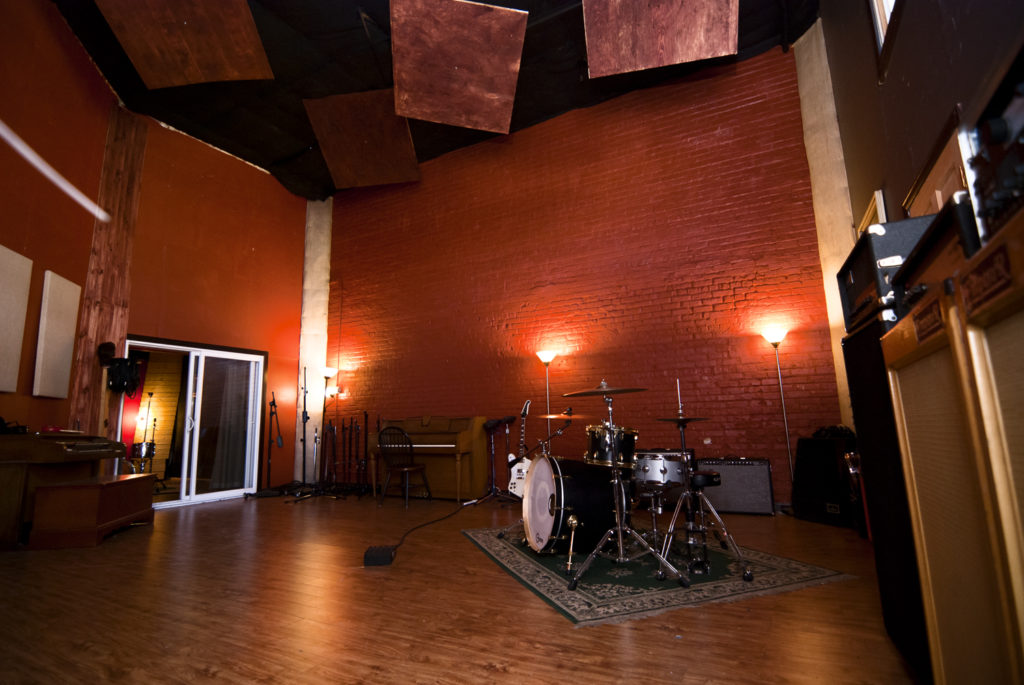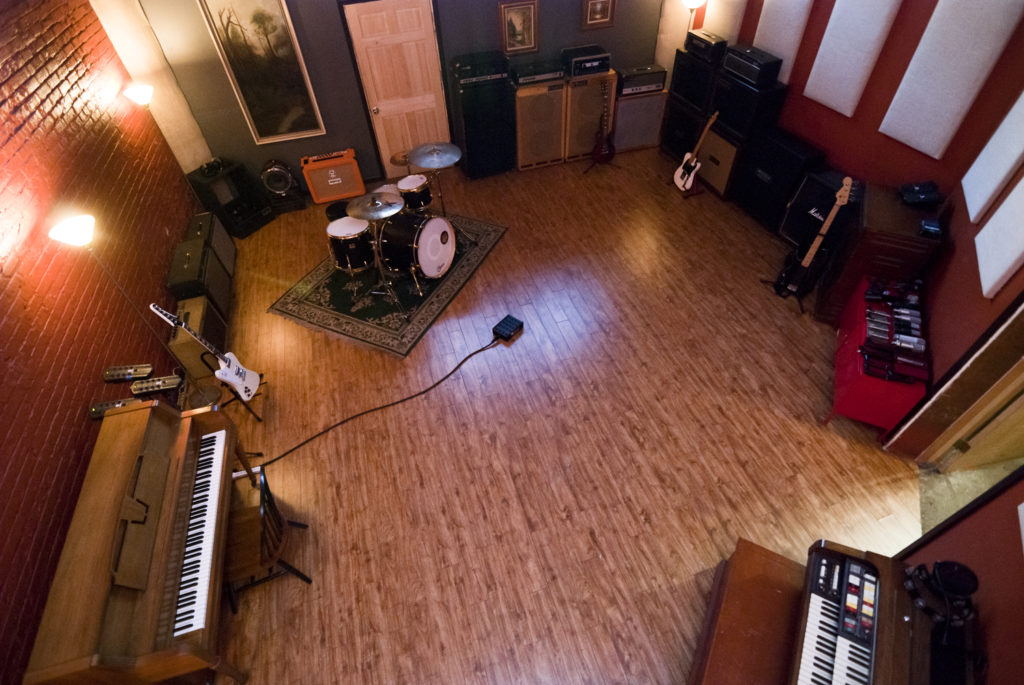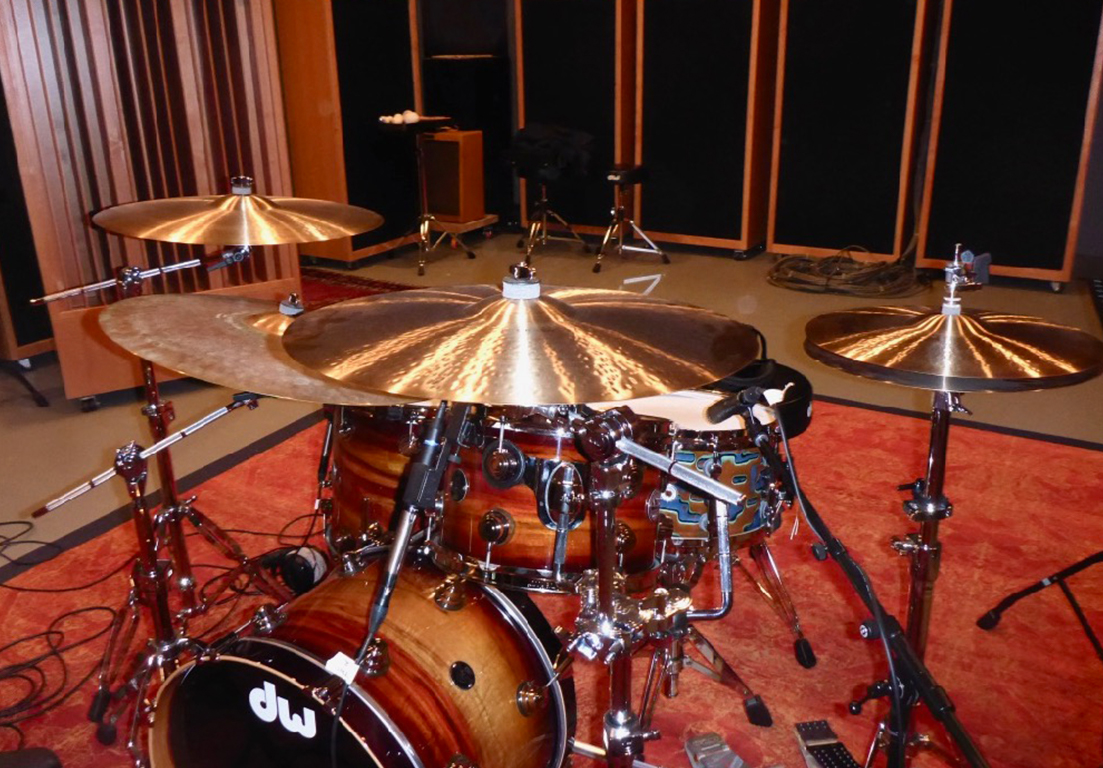Last week I was asked, “What is the biggest pitfall to avoid when building a drum room?” Well, with drums you need a big ceiling. Most of our ceilings in North America today are 8-foot. You couldn’t have the worst dimension for drums because the drums are going to sit on the floor and you’re going to be 6-foot / 5 foot away from the next surface and that bass drum that drummers use can produce energy down into the 40-cycle range which we all know from past videos, the 40-cycle wavelength is 30 plus feet long. We have updated this blog on 11/27/19 to reflect new parameters.

Live Room for Drums
Drums are a large energy-producing instrument and they are the full range. Low-frequency energy must have enough distance to live and die on its own volition. Certain distances work for the kick drum, the tom, and the snare. China can live in smaller rooms but it is usually never by itself. It is always attached to the drums somehow. Drums are full-range instruments and any drum room design must take this into account. Make sure your drum room plans include the proper ceiling height, width, and length to deal with the full frequency range energy.
So the minute you hit that kick drum you’re creating a 30 foot plus long-wavelength wave. And what’s the first surface that it strikes? The floor and the ceiling, the floor we can’t do anything about so we build platforms underneath it to absorb energy but the ceiling at 8-foot is always an issue. So you need a big ceiling because you need volume. So for a drum room, I don’t like anything to be less than 13 feet. Now, I know that’s not a favorable dimension in today’s room sizes but drums are really big energy-producing device and you need lots of volumes. You need all the surface areas away from the drums, so you need a pretty good-sized room.
Is That Standard Height Even For Garages in North America?
I think so, yeah it is, here in my house, I think 8-foot seems to be the standard size. All our building materials are 8-foot long. I just think that’s the way it is. I know some of our customers overseas and in Europe, it’s a lot different over there but buildings are a lot older and they really don’t subscribe to those kinds of distances and codes like we do here. So the option is to maybe dig down which is usually problematic and difficult.
Live Room Definition: https://en.wikipedia.org/wiki/Recording_studio
You’ve just got to find a new room for drums or you can’t use drums. You have to go to a drum kit which is an electronic version of drums with a different sound, different tools, less energy to work with. So always try to fit the energy that the device is producing into the room that you’re using. You know putting a 7-foot tall speaker in an 8-foot high room, very difficult. Reminds me when I used to have Leslie speaker cab in our lounge for the old Hammond organ. It was just too big for that room setup.

Aerial View of Drum Room
Another issue with a low ceiling height is microphone positioning. If you have an 8′ ceiling height then the overhead microphones are 12″ from the ceiling. This proximity effect or in some cases flutter echo can be audible especially to a microphone. It’s OK to have room sound in the room mics but you do not want it in the microphones listening to each instrument. You must have a distance for drums. There simply is no substitute for distance when it comes to the ceiling, width, and length in any drum room design. Make sure you get that “magic” ratio of the width, height, and length for your drum room plans.
First Reflections: https://en.wikibooks.org/wiki/Acoustics/Basic_Room_Acoustic_Treatments
I work a lot in live rooms in the older studios in Los Angeles. These rooms were built in the 60’s and 70″s and share many things in common. First, all the drum rooms have high ceilings. The ceiling height is 13′ – 16′. Widths can range from 27′ to 35′ and lengths the same. Second, the control rooms also have 13′ ceilings. Everyone back then knew the importance of higher ceilings. Since the floor to ear and ceiling to the ear are the first reflections to arrive at your ears, we need distance so the distortion they produce can be managed and we have enough distance to treat the issues.
In Summary
If you would like to learn more about room acoustics please sign up for my free videos and ebook by joining the mailing list here. I send room tuning tips and things for you to test in your room every Wednesday. They are easy to follow and really help you enjoy more of your music. And if you would like your room acoustic issues analysed for free by me then please fill in the form here and I will be happy to take a look for you.
Thanks and speak soon
Dennis








Building a drum room and came across this post. My room is 12x11x7. I’ve recorded drums before in a similar room that came out great. At this point I can’t change the physical size of the space but more focused on room treatment to maximize the rooms potential. Been spending a lot of time lately on your YouTube videos as well.
S, If the sound you get in your room size and volume works for you then it is great. However, small rooms produce large low-frequency issues that impact kick, tom, and snares. To manage this energy larger ceiling heights are required. Since you only have 7′ to start with, I would use freestanding units positioned around the drums. I would use 4 of our ACDA-10 and 4 of our ACDA-12. Each has foam on the face behind the fabric so middle and high-frequency Rt-60 times are brought down to levels the microphones like. Here are the links: https://www.acousticfields.com/product/acda-10-activated-carbon-diaphragmatic-absorber/ https://www.acousticfields.com/product/acda-12-activated-carbon-diaphragmatic-absorber/